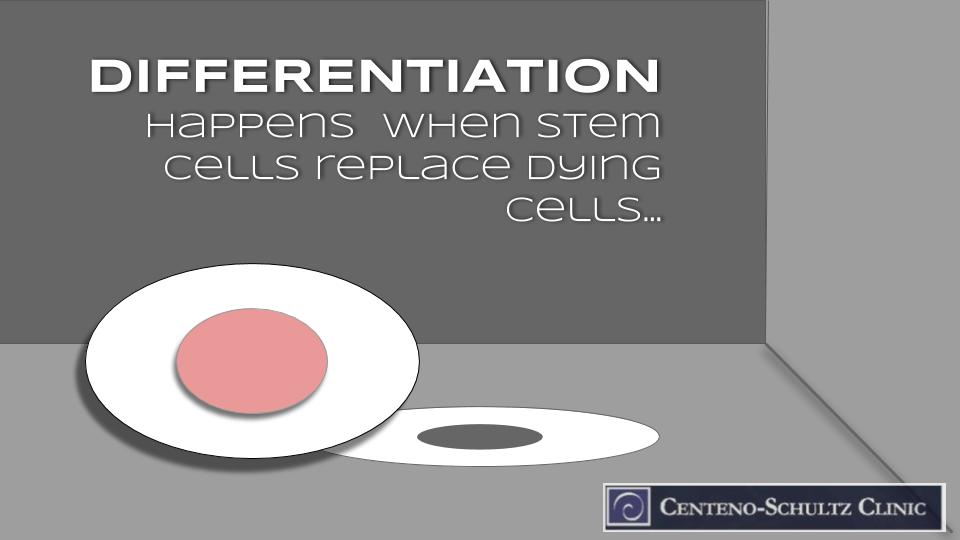Every day, billions of cells in the human body die. If the body didn’t have a way to replace those cells, we wouldn’t live very long. Why? Consider these cellular life-spans: Liver cells, for example, only live for about a year and a half. For red blood cells, it’s only about four months. We might get two to four weeks out of our outer layer of skin cells and a couple of weeks out of our white blood cells. The stomach and colon cells must be terribly envious of these other cells as they only survive about five days and four days respectively. Lucky for us, we do have a way to replace all of these dying cells: our stem cells differentiate into other cells.
A Quick Review of Our “Let’s Talk Stem Cells” Series
We’re at our halfway point in our “Let’s Talk Stem Cells” series, so before we dive into the newest topic, let’s review what we’ve already learned about stem cells:
- Stem cells can recharge the damaged batteries (mitochondria) of other cells.
- Stem cells can deactivate waste-removing cells (e.g. macrophages and microglial cells) that have gone bad.
- Stem cells can delegate repair to the best cells for the job and make them work harder.
- Stem cells can hijack other cells, turning them into protein-producing machines.
As you are likely starting to grasp, stem cells are certainly one of the hardest working multitaskers in the entire body. Now let’s take a look at how stem cells replace dying cells.
Stem Cell Differentiation: Traditional Tissue Maintenance and Repair
Today’s topic, stem cell differentiation, is perhaps the most traditional, and maybe familiar (thanks to high-school biology), method in which stem cells facilitate tissue repair. Stem cell differentiation involves replacing worn out, damaged, or dying cells. Stem cells live in every part of our body and are ready to act at a moment’s notice. So how does differentiation work exactly? Let’s look at this as a basic step-by-step process:
- When a cell is dying—say, for example, a skin cell—a chemical signal is detected by a stem cell living in the area.
- The signaled stem cell makes two copies of itself (one copy is kept in reserve and the other becomes a progenitor cell).
- The progenitor cell detects clues from other cells in the area as well as the pressure and chemical environment.
- The progenitor cell then transforms into the exact cell that it is replacing.
After the differentiation process is complete and the repair job done, we now have one newly created stem cell in reserve and one newly created local cell (in our example, a skin cell) replaced. This new skin cell will live about two to four weeks, and the differentiation process will start all over again to replace this dying cell. If you are a visual learner, Dr. Centeno’s video below will help you better understand this process:
One thing that makes stem cells so unique is that they can become many different kinds of cells, and they do this through the process of differentiation. The body is in a constant state of regeneration at the cellular level, and science has just explored the fringes of what our stem cells are capable of. Check back Wednesday for another installment of “Let’s Talk Stem Cells.”
